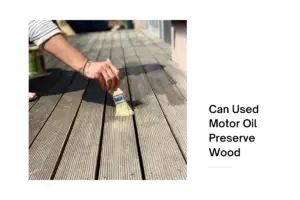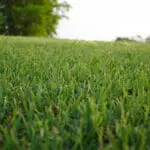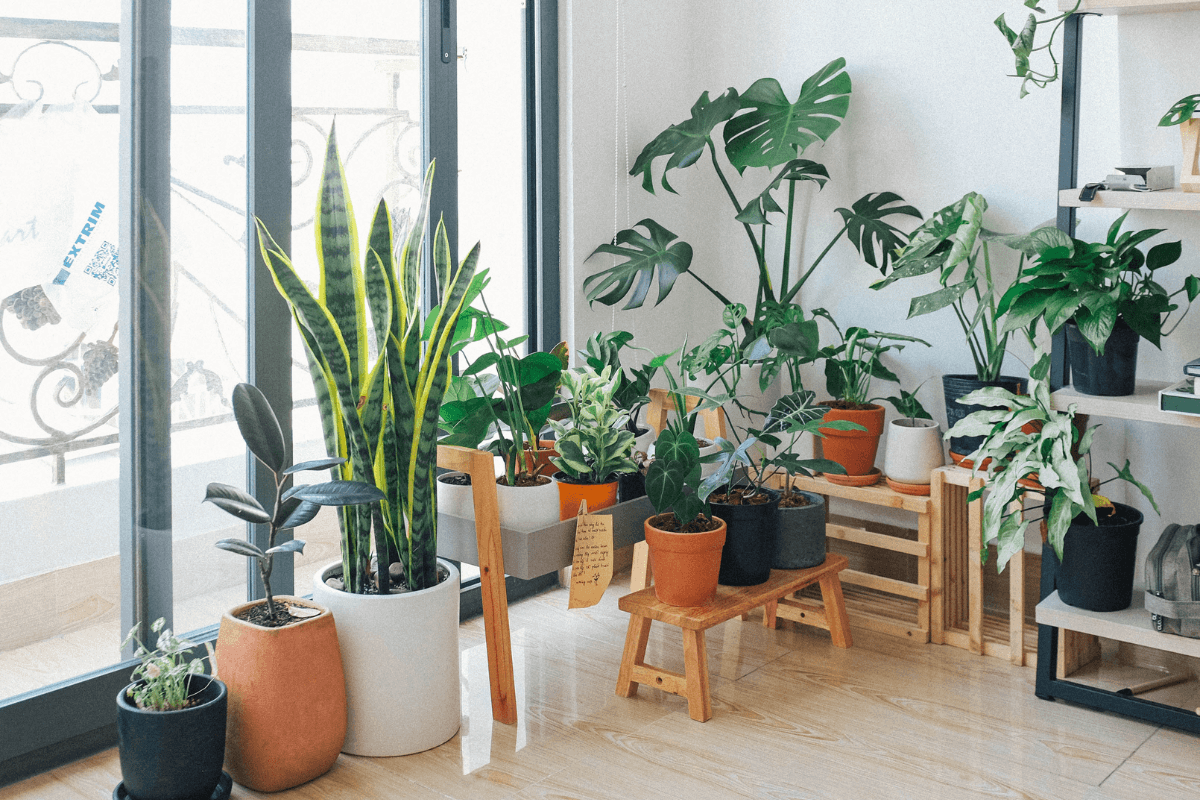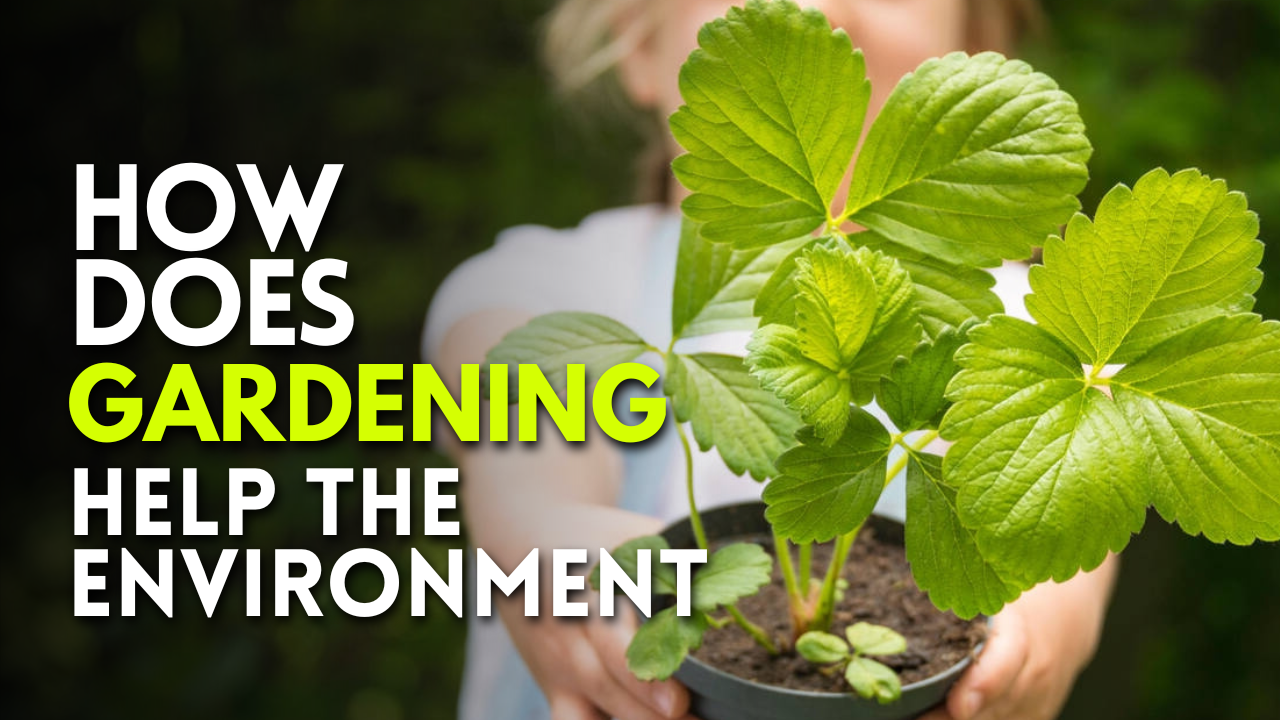Snake plants are a great option for people who are new to taking care of houseplants. They are hardy and difficult to kill, whilst also remaining a wonderful, rich-green addition to any room. Snake plants can also grow to quite a size, which makes them ideal for people hoping to fill their space foliage.
However, despite their hardy nature, there are a few things that can go wrong with a snake plant. A common sign of a weakened snake plant is yellowing leaves. To understand the causes of yellow leaves, and thus, how to prevent or fix them, check out the information below!
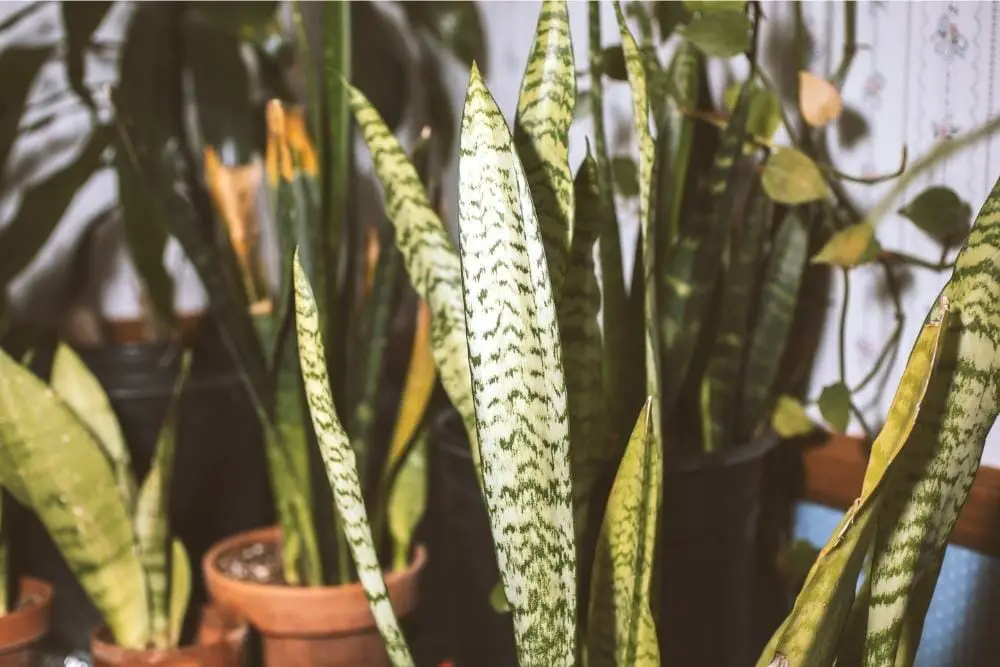
What is a snake plant?
Snake plants, or dracaena trifasciata, are one of the most popular species of house plants. They have stiff leaves which can range from six to eight-foot-tall and can vary in color. Although, they are generally dark green in color and often have a yellow border.
Snake plants are also particularly easy to grow, and are often labeled ‘nearly indestructible’. They thrive in most lights and don’t require a huge amount of regular watering, which makes them ideal for busy people hoping to add some greenery to their space.
Why is my snake plant turning yellow?
Though snake plants are hardy, it is still possible for a snake plant to struggle. In fact, yellow leaves are a common sign of a faltering snake plant.
To find out why snake plants can take on a yellow hue, check out the causes below. We also include some handy tips and tricks to ensure the overall health of your snake plant is maintained.
Underwatering the plant
If you find yourself questioning the last time you watered your snake plant, it might be that its yellow hue is a consequence of underwatering.
Although it is true that snake plants are hardy, and can last a fair amount of time without water, the root system still requires watering once every two weeks or so.
Without water, the soluble nutrients within the soil cannot be absorbed by the plant. These nutrients allow the plant to physiologically function in the normal way. When a plant is dehydrated and unable to absorb nutrients, its leaves will likely turn yellow as a result.
Overwatering the plant
Overwatering is surprisingly lethal for a plant. To maintain a healthy snake plant, you should water it roughly once every two weeks, leaving time for the soil to dry out completely before watering again. If you do this, the leaves should be a healthy, dark green color.
When you water the plant, there should not be any stagnant water sitting on top of the soil. Stagnant water is a great environment for fungal diseases to spread, and as such, is a recipe for disaster!
Too much direct sunlight
Just because snake plants can grow in pretty much any light level, doesn’t mean that they can withstand strong, direct sunlight for long periods. Just like humans, if a snake plant sits in direct sunlight for too long, its leaves will begin to burn.
This can happen especially if your snake plant is situated by a window. Sometimes, window glass can intensify the strength of the sunlight the plant receives, and will therefore burn the leaves, or even cause the plant to lose excess water.
To prevent this, find a spot in your home that gets a lot of indirect sunlight. This can be a bit tricky, and often is a trial-and-error process, but it is definitely worth it when you see your snake plant thriving!
Extreme temperatures
Snake plants are native to more tropical regions, and therefore, don’t respond well to extremely cold temperatures. In colder environments, the cell walls of the plant might be damaged, which in turn, hinders the processes through which the plant absorbs essential nutrients.
To avoid leaves turning yellow as a consequence of unsuitable temperatures, be sure to keep your snake plant within an environment that is roughly 60 to 80 degrees Fahrenheit in the day, and between 55 and 70 degrees Fahrenheit at night.
Also, make sure that you don’t mist your snake plants. They just require 40% relative humidity at average room temperature, so misting indoor snake plants may be dangerous.
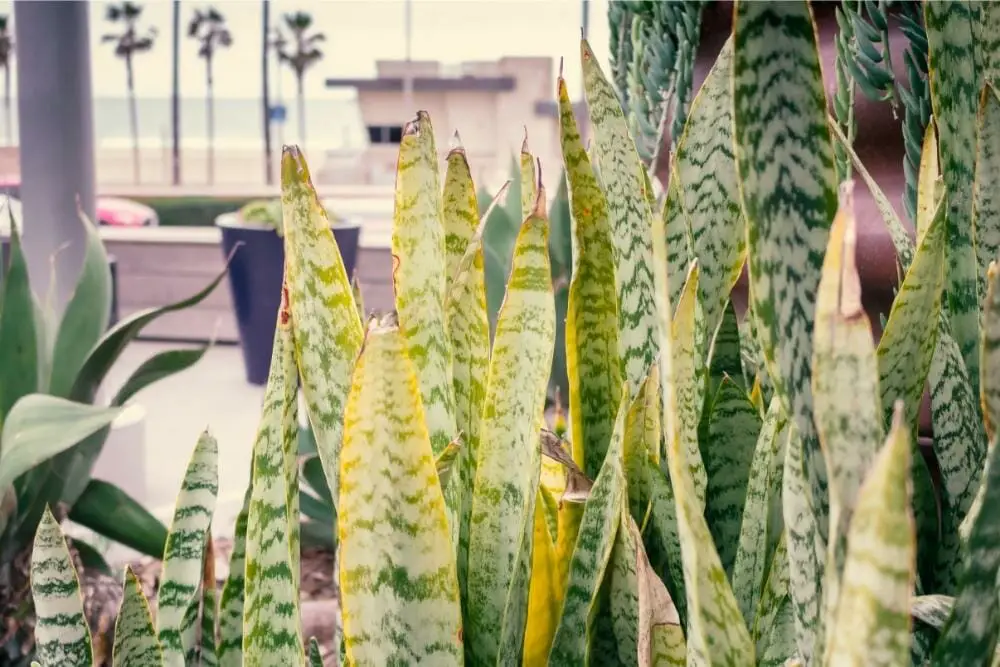
Insect infestation
Yellow leaves can also be a sign of a pesky insect infestation. However, if this is the case, there are usually a number of other visible symptoms. In particular, the snake plant would become quite weak, and there may be holes in the leaves.
If you believe your snake plant has been infested, it’s important to act fast. First, make sure that the infested plant is far from other plants, to avoid them becoming infected too. It is also important to figure out what kind of pest has infested your snake plant. Some common ones are mealybugs and spider mites.
Mealybugs are small, pink insects that are covered in a white, wax-like substance. A mealybug infestation will result in deformed leaves which have small white spots on them. If you notice these signs, try rinsing your plant in warm water, or rub neem oil on its leaves.
Spider mites are quite discrete insects, which can make them tricky to notice. Make sure to keep an eye out for white webbings on the leaves or at the lower base of the snake plant. If you notice these signs, neem oil or a good insecticidal can swiftly remove the infestation.
Root rot
The roots of your snake plant absorb water, oxygen, and nutrients from the soil. If the soil is too wet for a long period of time, the roots of the plant begin to suffocate, and the plant starts to decay.
In addition to overwatering and inadequate drainage, the presence of fungus in the soil can cause root rot. Fungi may lay dormant within the soul, and start to flourish when it has the most suitable environment.
To prevent root rot from taking hold of your snake plant, here are a few things you can do:
- Provide adequate drainage
Plant pots that don’t allow for sufficient drainage are dangerous. Make sure that there is always a way for excess water to escape. Either use a pot with drainage holes or place a few layers of stones at the bottom of a pot without drainage holes. Also, don’t water the plant too much at one time. Little by little is always preferable!
- Use an appropriately sized container
Although you may be tempted to pot your snake plant in a larger pot than it needs, in order to give it some growing room and save yourself some time down the line, this can make root rot more likely. Larger pots mean that there is excess soil and excess moisture surrounding the snake plant.
This is a perfect recipe for root rot and is a particularly bad idea for snake plants. To avoid this, make sure you pick a pot that is just about large enough to hold the root ball of the plant. When you need to repot your snake plant, which is usually every 2 to 3 years, increase the pot diameter by 1 to 2 inches.
- Water less-frequently
If you water your snake plant before the soil is able to dry out, it is likely that root rot will take hold. Even if you think that it has been a while since you’ve watered your snake plant, if the soil is still damp to touch, it’s a good idea to leave it a little bit longer!
- Use the appropriate soil
Snake plants don’t do too well with heavy and dense soils such as pure garden soil. These types of soils will let the water pass through too quickly and can stay waterlogged for extended periods of time. Mature soil can also have the same effect. To prevent this, opt for porous and fast-draining soil.
Fungal diseases
Another issue that arises as a consequence of overwatering your plant is a vulnerability to fungal infections. Fungal diseases are also more likely to take hold if the plant is in an overcrowded pot or already has root rot.
Fungal diseases affect the overall health of your snake plant, and can therefore turn the leaves a yellow color. To combat fungal diseases, it’s important to use effective fungicides and to disinfect both the soil and the container.
Over Fertilizing
For better growth, it’s a good idea to add a little bit of fertilizer to the soil. However, snake plants don’t require much at all. Be careful not to add too much, as over fertilizing can turn the leaves of your plant yellow, and affect its overall health.
It’s best to fertilize the plant during its growing season, which is throughout the spring and summer months. Avoid fertilizer during the dormant season of the plant, which occurs within the winter months.
Overcrowded pot
When snake plants are overcrowded in their pots, it can result in there not being an adequate amount of nutrients within the soil. To avoid this, simply make sure that your snake plants are potted in an appropriately sized pot. It might also be a good idea to divide larger snake plants into smaller ones.
Nutrient deficiencies
There isn’t much to be concerned about in terms of nutrient deficiencies in snake plants. However, to prevent yellowing leaves, simply make sure that you are sparingly using a nutrient-rich fertilizer. Yellow leaves may be a sign of a nitrogen deficiency.
Soil pH
Finally, it is always important to ensure that you are using soil that is suitable for the growth of your snake plant. If the pH of the soil isn’t right, the leaves of your snake plant may turn yellow, and its overall health is likely to be affected.
Make sure you use soil that has a pH of roughly 6.1 to 6.5. By doing so, you’re giving your snake plant the best conditions for it to survive and keep maintaining its luscious, strong green leaves.
Final thoughts
Snake plants are a wonderful addition to any space. However, if the conditions aren’t quite right, their growth and appearance are likely to be affected. We hope that the information above helps you to maintain the health and beauty of your snake plant!

